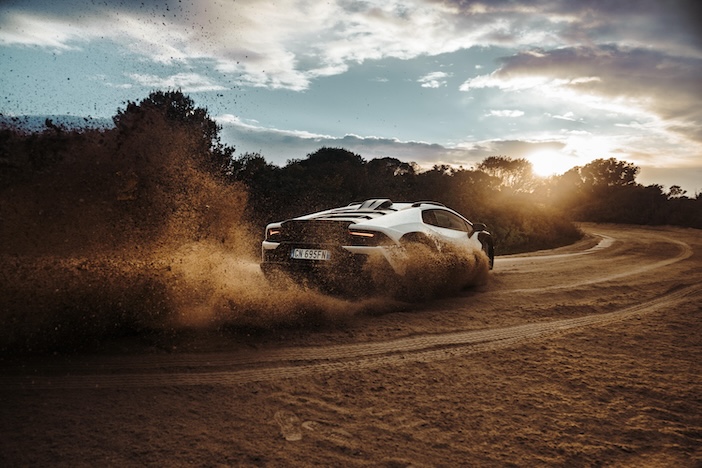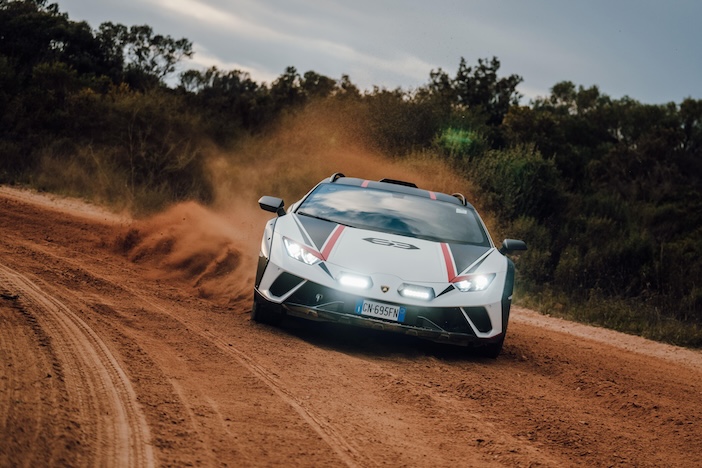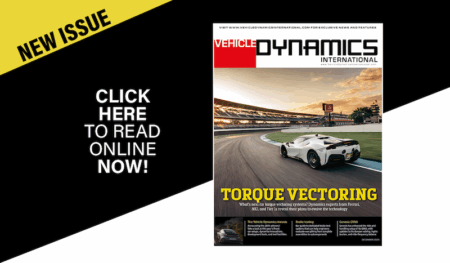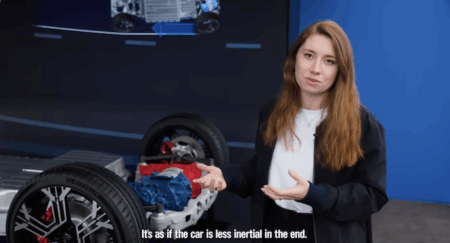We’re at Nardò Technical Centre with Lamborghini, which one might assume would mean high-speed driving around the 12.6km, four-lane High Speed Ring test track, or laps of the incredible 6.2km Handling Track. No, we won’t be driving on those tracks today. Indeed we’ll rarely be on tarmac, as we’re on the Strada Bianca O and S tracks, two 2.1km circuits designated as off-road.
The tracks are a rather alien environment for the Lamborghini team as well, including Mario Fasanetto, Lamborghini’s test driver from the research and development department. He’s been at Lamborghini since the days of the Countach, and spent his early career working with legendary Lamborghini test driver Valentino Balboni. Naturally, the Urus SUV has been tested on the Strada Bianca circuits, but for other off-road- capable vehicles from the Italian firm you need to look back to the LM002 of the late 1980s.
That is until Lamborghini introduced the Huracán Sterrato, a 5.2-litre V10-powered, 610hp sports car with off-road intent. Unsurprisingly, Fasanetto explains that creating an off-road-capable super sports car wasn’t the work of a moment, saying: “the development of this car took longer because we didn’t have a benchmark for it – we didn’t have a reference point.”
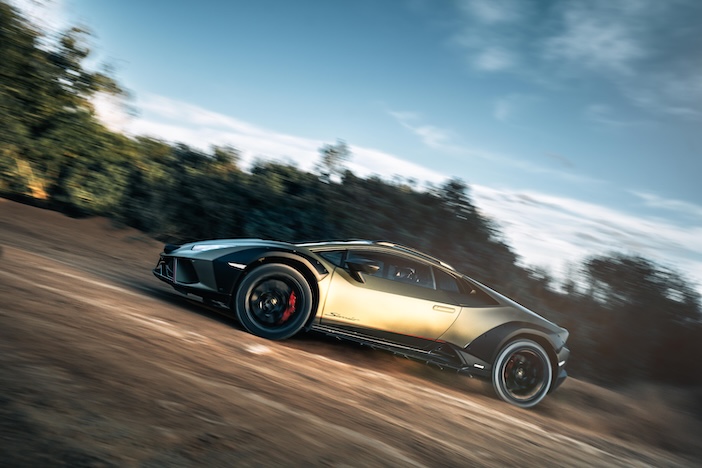
The idea of the Sterrato – which means ‘gravel’ in Italian – was conceived in the design studio. Normally such ideas remain just that – ideas – but the Sterrato sparked the imagination of the engineers at Lamborghini. A prototype was built and brought to Nardò for testing, and the results proved encouraging.
“We undertook a private test here to test the concept and the driving dynamics, and the feedback was good. It’s quite a unique car in the super sports car segment, but even so we wanted to make sure it still felt like a Lamborghini,” explains Fasanetto.
That means feeling fun to drive, but achieving that on all surfaces – with Huracán underpinnings. The Sterrato’s suspension is based on that of the Huracán Evo, comprised of independent double-wishbones all round, with steel springs and MagneRide magnetorheological damper control. Unsurprisingly it’s higher than the Huracán Evo, with Lamborghini raising the ride height by 44mm.
“Of course the priority is ground clearance, because you need to have a higher car when you are driving on different types of surfaces,” explains Fasanetto. “We found 44mm a good compromise because if you want to maintain good handling when on road, you can’t go much higher, as otherwise the aerodynamics will be compromised, losing any kind of support from the underfloor.”
That underlines some of the unique challenges the Sterrato presented for the engineering team.

An unusual ride height for a Lamborghini
That ride height is fixed, too, unlike the Porsche 911 Dakar off-road sports car. That was a decision based on reducing complexity, as it negates the need for additional hardware to raise and lower the car – and the associated weight.
Fasanetto explains that during development work on the first prototype they used hydraulic dampers to ascertain that sweet spot in height because, “it was easier for us to make a change in terms of damping, rebound, and how to get the balance. Once we had that number, we moved to the magnetorheological dampers on the production car.”
The steel springs are 25% less stiff than those on the Evo, while the raised height is accompanied by increased track front and rear – 30mm and 34mm, respectively – with a moderate increase in wheelbase coming as a result of those changes. The dampers differ from those on the Evo, but only due to their greater range of travel.
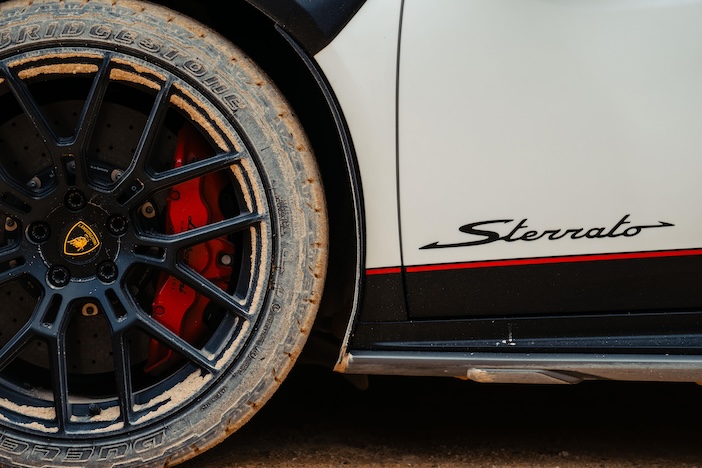
Naturally, tyres play a huge part in the development of such a car. “A lot of work was done with the tyres, because the result we are looking for from them is something that is not usual,” explains Fasanetto.
Bridgestone rose to the challenge, creating a Sterrato-specific version of its Dueler AT002 tyres, with a unique tread pattern design and a special compound to achieve grip on the bandwidth of surfaces the Sterrato can drive on. They are of 235/40 R19 and 285/40 R19 sizes and, usefully given the lack of space in the Huracán for a spare wheel, incorporate run-flat capability that allows driving at up to 80km/h for a maximum of 80km with 0 bar pressure.
“We did a lot of work with Bridgestone and the result is really amazing. The soft compound allowed us to drive on off-road surfaces, but even when we drove the car on track the tyres provided good performance,” explains Fasanetto.
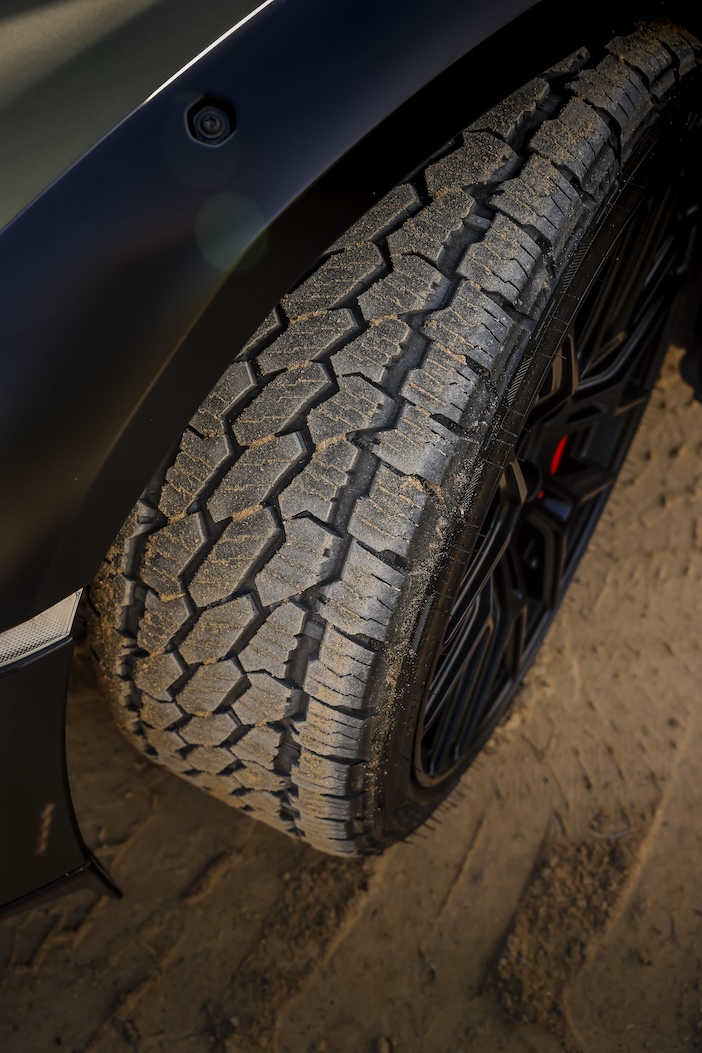
A carbon-ceramic braking system
Behind the wheels wearing those tyres is a carbon-ceramic braking system. Fasanetto reveals they did consider steel brakes for off-road durability, but after extensive testing found the existing Huracán brakes to be durable, even in off-road conditions.
The LDVI (Lamborghini Integrated Vehicle Dynamics) system from the Huracán has also been retained, though it gains an additional Rally mode that is selectable by the driver. The mode is specifically tuned for low-grip conditions, and Fasanetto explains that the setup is predominantly rear-driven when activated, with the front axle only coming into play when required.
That rear bias, says Fasanetto, is what makes Sterrato so fun to drive, but adds that the team “always keep in mind the car must be safe for the ‘standard driver’. We have to consider that a car must be drivable even if the customer is not hugely skillful.”
Having experienced it for myself on Strada Bianca, with Fasanetto alongside, the amount of latitude the system allows on loose surfaces is incredible. “We changed the balance of the four-wheel drive to have more possibilities to drive the car in oversteer,” says Fasanetto. “You can keep the stability control on, which is kind of like having an angel on your back.”
In Rally model the damper is at its softest setting too, aiding the suspension’s capability in the rough, and helping maintain traction and wheel control. The dampers stiffen up in the on-road settings.
What is apparent is that Mario Fasanetto has enjoyed the development process with this car. “We had a lot of fun,” he admits, adding that with Sterrato: “you can have fun without getting to very high speeds.”
The Sterrato takes Lamborghini sports cars to new areas altogether, even beyond Nardò’s Strada Bianca tracks.
